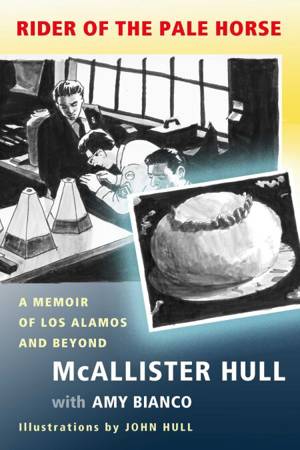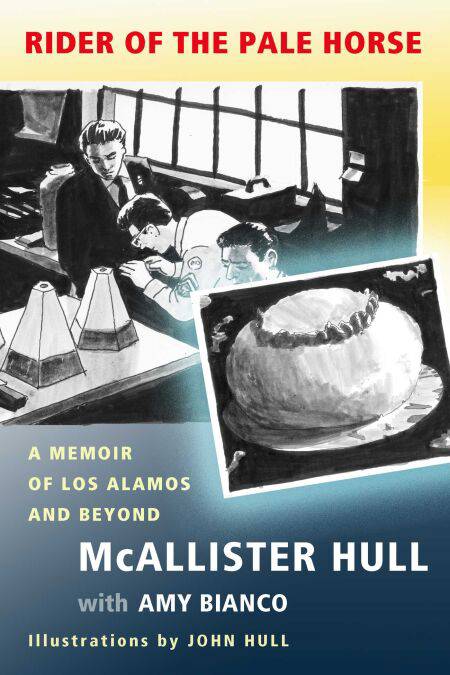
- Afhalen na 1 uur in een winkel met voorraad
- Gratis thuislevering in België vanaf € 30
- Ruim aanbod met 7 miljoen producten
- Afhalen na 1 uur in een winkel met voorraad
- Gratis thuislevering in België vanaf € 30
- Ruim aanbod met 7 miljoen producten
Zoeken
€ 11,17
+ 11 punten
Uitvoering
Omschrijving
A scientist's recollection of his life as a junior member of the Manhattan Project, Rider of the Pale Horse recounts McAllister Hull's involvement in various nuclear-related enterprises during and after World War II. Fresh from a summer job working with explosives in the chemistry department of an ordnance plant, Hull was drafted in 1943, after his freshman year in college. Unlike other accounts written by scientists and historians of that era, Hull's narrative offers a realistic picture of the dangerous and messy job that GIs and civilian powder men were asked to do. Life in the workshops where bomb components were constructed was very different from life in the offices where they were designed.
Hull's description of his postwar work supporting the Bikini Atoll tests in the Pacific and the early concerns about the effects of a hydrogen bomb explosion illuminate the Dark Age of nuclear weaponry. John Hull's handsome illustrations show technicians and scientists at work and bring the story to life.
Rider of the Pale Horse adds valuably to the total record of the most important technological development of the twentieth century.--Richard Rhodes, author of The Making of the Atom Bomb
Hull gives a bottom-up view as seen by a foot-soldier. His account of the grubby details of the project is illuminated by his later view of its historical repercussions and bears new witness to a turning-point of history.--Freeman Dyson, author of Disturbing the Universe
Hull's description of his postwar work supporting the Bikini Atoll tests in the Pacific and the early concerns about the effects of a hydrogen bomb explosion illuminate the Dark Age of nuclear weaponry. John Hull's handsome illustrations show technicians and scientists at work and bring the story to life.
Rider of the Pale Horse adds valuably to the total record of the most important technological development of the twentieth century.--Richard Rhodes, author of The Making of the Atom Bomb
Hull gives a bottom-up view as seen by a foot-soldier. His account of the grubby details of the project is illuminated by his later view of its historical repercussions and bears new witness to a turning-point of history.--Freeman Dyson, author of Disturbing the Universe
Specificaties
Betrokkenen
- Auteur(s):
- Illustrator(s):
- Uitgeverij:
Inhoud
- Aantal bladzijden:
- 170
- Taal:
- Engels
Eigenschappen
- Productcode (EAN):
- 9780826335555
- Verschijningsdatum:
- 7/08/2005
- Uitvoering:
- E-book
- Beveiligd met:
- Adobe DRM
- Formaat:
- ePub

Alleen bij Standaard Boekhandel
+ 11 punten op je klantenkaart van Standaard Boekhandel
Beoordelingen
We publiceren alleen reviews die voldoen aan de voorwaarden voor reviews. Bekijk onze voorwaarden voor reviews.








